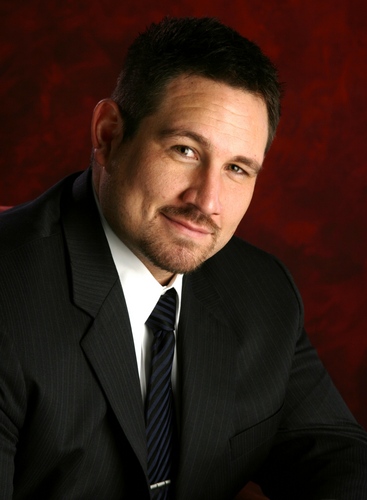If you are a Pilot for United Airlines you have a great 401(k) plan called the Pilot Retirement Account Plan (PRAP), but there are a lot of factors that need to be analyzed before making investment decisions. In this article we are going to take you through the investment options and the extrinsic factors that require consideration.
The PRAP has two major types of funds that can be selected as investments: Target Date Funds and Core Funds. There is also the Personal Choice Retirement Account (PCRA) option that allows much more flexibility. However, the PCRA is a feature within the actual 401(k) itself and needs to be activated and managed more like a traditional brokerage account.
PRAP Target Date Funds:
Target Date Funds are built to shift the asset allocation (mix of stocks and bonds) to become more conservative as retirement approaches. These are typically available in five-year increments. So, if retirement is to take place in 2033, the choices that match this date are the 2030 or 2035 funds. Each family of funds operates in a slightly different way, but the idea is they will slowly adjust to a very conservative portfolio by the date listed on the fund.
These funds can be useful for those that are planning to make their own investment decisions and don’t want to spend time evaluating the ideal asset allocation along the way. However, these funds can also be quite expensive and inefficient.
A Target Date Fund is what is called a “fund of funds”, which means that it invests into other mutual funds. On its face, there is nothing wrong with this, but take note that there may be additional expenses associated with the underlying funds in addition to the stated expense ratio of the Target Date Fund itself. In other words, if the Target Date Fund is charging 0.5% and it invests in other funds that also charge 0.5%, the total explicit fee may be 1% without actually stating it. Additionally, each fund has to carry a certain percentage of cash to facilitate redemptions, which means a fund of funds, by definition, has to carry twice as much cash.
When a fund invests in other funds there is also a risk of increased transaction costs, as the underlying funds are not likely communicating with one another. For example, if two mutual funds own Apple stock one may decide to sell it while the other may increase the size of the position. The net position in Apple may stay the same but transaction costs have been paid to buy and sell, while the investor is none the wiser.
Overall, Target Date Funds are very basic investment vehicles and do not require much oversight. If the goal is for a simple, easy, “set it and forget it” strategy, then these may be a great option.
Please note, if no investment elections are made in the PRAP a Target Date Fund based on the birthday on file will automatically be purchased. If there is no birthday on file the default is the 1997 Target Date Fund, which may be too conservative for most investors.
PRAP Core Funds:
Core Funds are much more specialized than Target Date Funds. Core Funds come in all shapes and sizes and offer many different options to choose from. This allows the investor to be much more specific in choosing the types of stocks, bonds, and commodities needed to build a portfolio. Typically, both managed funds and index funds are available.
While there far more options available with Core Funds, there are also far more factors and risks to consider. These considerations include, but are not limited to:
- Asset Allocation: Stocks, Bonds, Commodities, Other
- Managed vs. Index Funds
- Sub Asset Allocation: Country, Size, Style, Credit Quality, Duration, etc.
- Expense Ratio (Management Fee)
- Cash Drag (Required Idle Cash)
- Portfolio Turnover and Transaction Costs
- Other Sales and Administrative Fees
- Correlation with Other Investments
- Does it fit the overall investment goals?
Utilizing Core Funds can be very beneficial for those planning on building a custom portfolio engineered to meet long-term goals. However, each fund needs to be considered carefully in order to mitigate the risks and maximize the benefits.
When building a portfolio of Core Funds, one must take the time to ensure the funds selected are efficient and get the proper exposures. Additionally, each fund chosen needs to work in a complimentary fashion with the other funds by eliminating exposure overlap. For example, if an investor chooses a large cap growth fund and a technology fund, they must be aware that both will have large positions in companies like Apple, Microsoft, and Google. If the goal is to get additional exposure to this area of the market then mission accomplished, but in many cases, this is done unknowingly adding additional risk and transaction costs to the overall portfolio. It is these types of complexities that make investment decisions so difficult.
PRAP and the PCRA
The PCRA option gives United Airlines pilots the ability to invest in almost any publicly traded security. This is done by creating a sub-account within the PRAP that allows the use of the Charles Schwab brokerage platform to buy and sell securities. The PCRA is by far the most flexible of all available options and is our platform of choice for managing the assets of United Airlines pilots, but this doesn’t mean making the investment decisions is any easier.
Is the PCRA option right for me?
The PCRA option is designed for two main groups of United Airlines pilots: sophisticated investors looking to create and actively manage their own portfolios and investors who are looking to have a professional take over the management of their portfolio for them.
Experienced Investors Looking to Self-Manage
For the experienced self-manager, the PCRA option opens up the world of investing. The fund restrictions associated with the standard 401(k) are no longer in effect and securities can be bought and sold as if it is a normal brokerage account. However, there are some restrictions that need to be noted:
- No Unlisted, or Non-NASDAQ Traded Securities
- No United Continental Holdings, Inc. (UAL securities)
- No Security that Produces a K-1
- No Security that is Traded on a Foreign (Non-U.S.) exchange
- No Tax-Exempt Mutual Funds
- No Tax-Exempt Fixed Income Funds
As the PCRA option still resides within the PRAP, just like any other retirement account, it is subject to the restrictions outlined by the Employee Retirement Income Security Act of 1974.
Looking for professional help?
If the Pilot is looking for a professionally managed portfolio or wanting something more custom than a passive fund strategy, but doesn’t have the time to manage it themselves, the PCRA is a wonderful choice. The PCRA option allows the hired investment advisor to obtain trading authorization on the account (with written consent of course) so they can actively manage the assets. The advisor needs to have a relationship with Charles Schwab and be registered as an investment advisor with the state or the SEC to manage the assets in your PRAP.
A few things to consider when hiring a professional:
- Is the advisor a fiduciary?
- Do they have expertise and experience working with United Airlines Pilots?
- How does the advisor get paid? (fee only, sales commission, combination of both)
- What kind of strategy does the advisor use? (active, passive, other)
- Does the advisor manage money in house or farm the process out to a third party?
- Is the portfolio customized for you?
- Do they provide the financial planning services you need?
- Does their service model fit your needs?
Making investment decisions is hard, if you would like to get a more detailed breakdown of these considerations, as well as information on the different types of firms that operate in the portfolio management space, please feel free to download our free Financial Services Industry Overview or give us a call. we are always happy to help.
All information provided in this article regarding the United Airlines benefits, United Airlines Pilots, or anything not specifically related to Delphi Advisers, LLC. has been obtained by working directly with United Airlines pilots or from the following sources: The United Airlines Benefits Book by United MEC Retirement and Insurance Committee (2019), https://signon.ual.com/oamfed/idp/samlv20?SAMLRequest=fZHNasMwEITvgbyD0T2WrNg4FbbBNBQC6SVOe%2Bhta8uNwJJcrRT6%2BHXc30DpdXa%2FYWa3QNADH0Ud%2FMkc5GuQ6KM3PRgUH5OSBGeEBVQoDGiJwreiqe%2F3gsdMjM5629qB%2FGb%2BRwBROq%2BsIdFuWxLVMUgY8C5bP3eQJjnb9DxneZpladLBBiSJHqXDCSjJxE8UYpA7gx6MnyTG0xW7WbHsmOQi4yJZP5FoO9VQBvxMnbwfUVCK6sVYEwcY4tZqakH3sqOqG%2Bkl9plP3vVXuFtrMGjpGunOqpUPh%2F2PT%2B%2B%2FPZpL37sjrVsk1XIRRcV8ATFndNUfREGvNpaLT%2BH6BdU7&RelayState=AOU681U0SlIJRbDjZAwnhpM7, www.IRS.gov. Delphi Advisers, LLC. does not certify the accuracy of the information on this page, as it may be time-dependent or change when new information is published. The information on this page is not investment or tax advice, it is general information meant for general consumption by the public. Investing in capital markets has an inherent risk of loss and we advise everyone to seek professional assistance before making any investment or tax decision. Please visit our disclosures page for more information.



